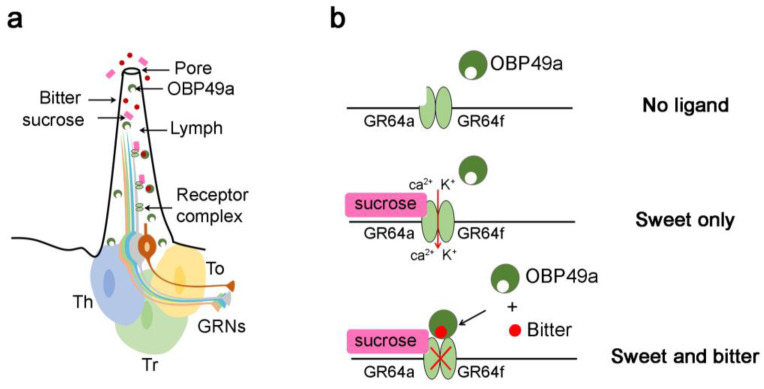Figure 10.
Hypothetical model of the suppression mechanism of sweet taste by bitter chemicals. (a) Schematic representation of sugar-sensing L-type sensilla. L-type sensilla end with a terminal pore and house four gustatory receptor neurons (GRNs) and one mechanosensory neuron. Three accessory cells, trichogen (Tr), thecogen (Th) and tormogen (To) cells, surround the cell body of each GRN. The GRN dendrites are bathed in the sensillum lymph containing OBP49a. (b) Schematic representation of the role of OBP49a. Top and middle: the sucrose receptor complex, GR64a with GR64f, is only active in the presence of sucrose. Activation of this complex leads to the entry of calcium and potassium into the neuron. Bottom: the presence of bitter compounds with sucrose inhibits the GR64a and GR64f receptor complex. More precisely, bitter compounds bind to OBP49a, and this complex inhibits the receptor even in the presence of sucrose. Adapted from [36,122].

